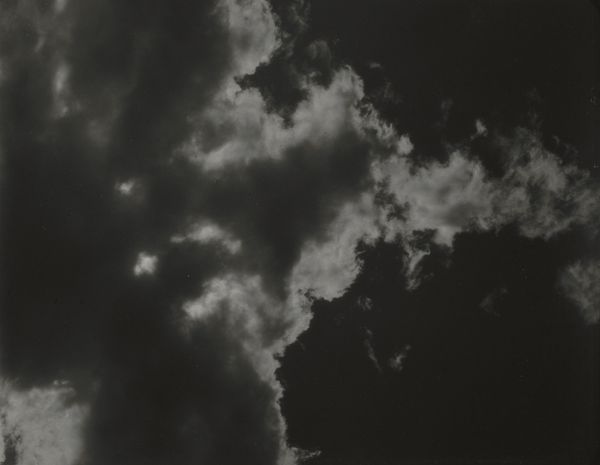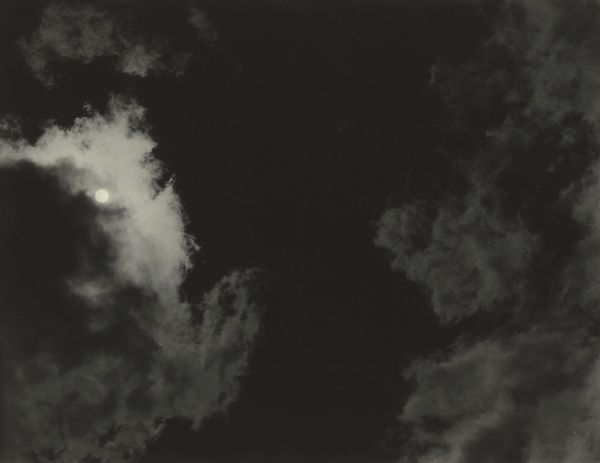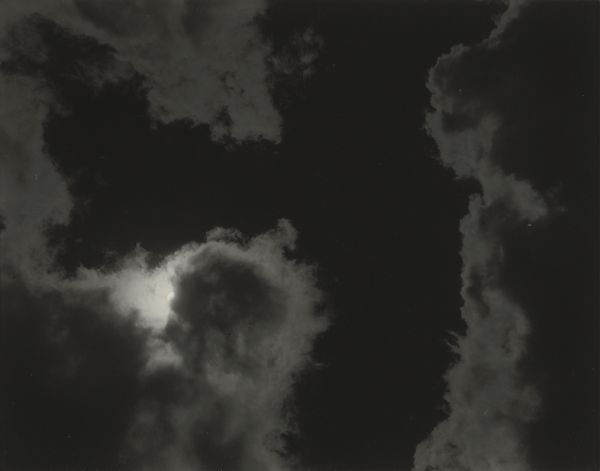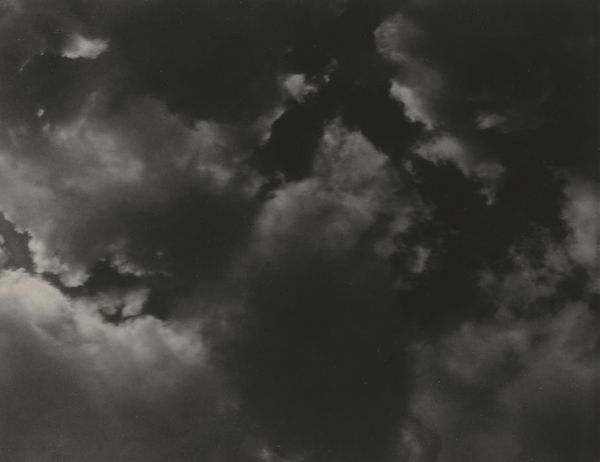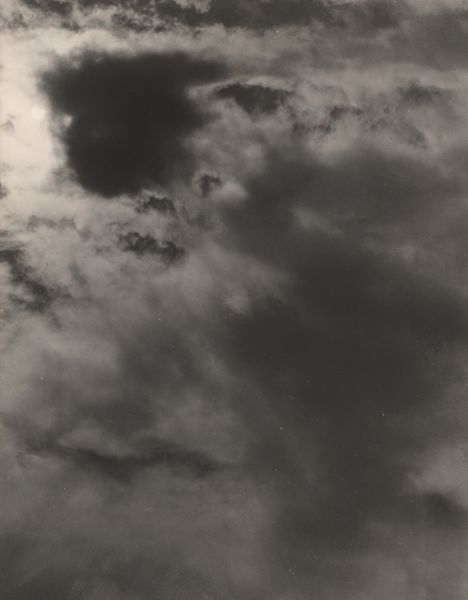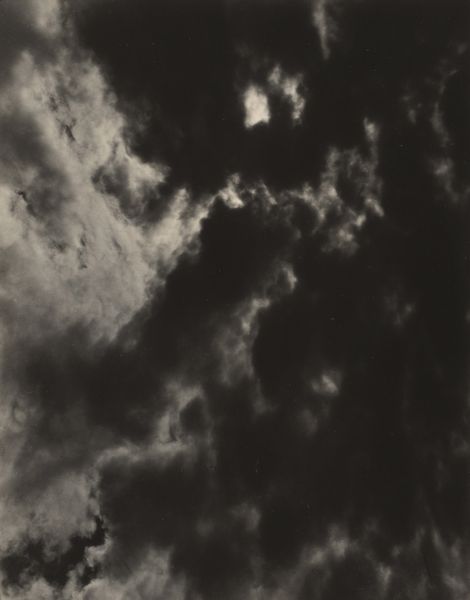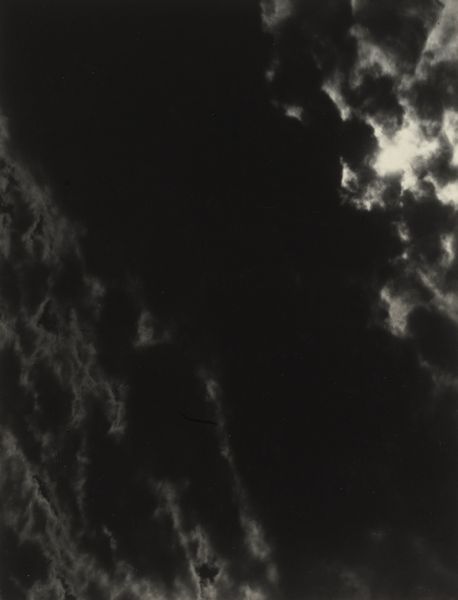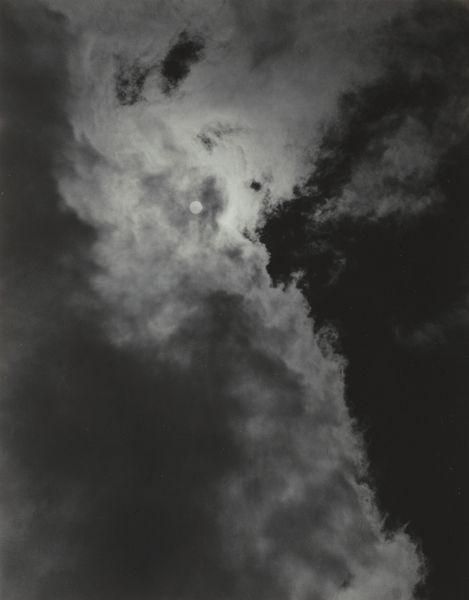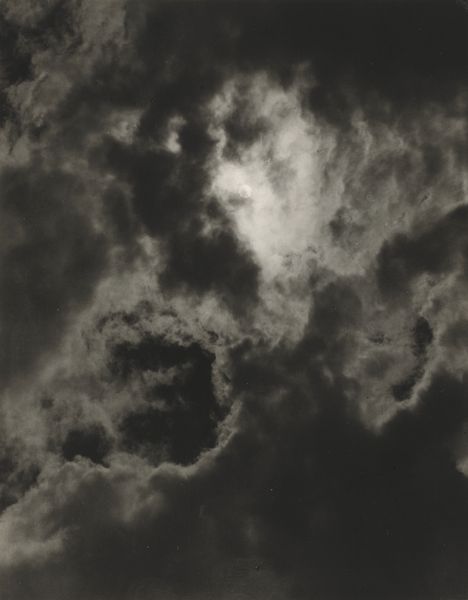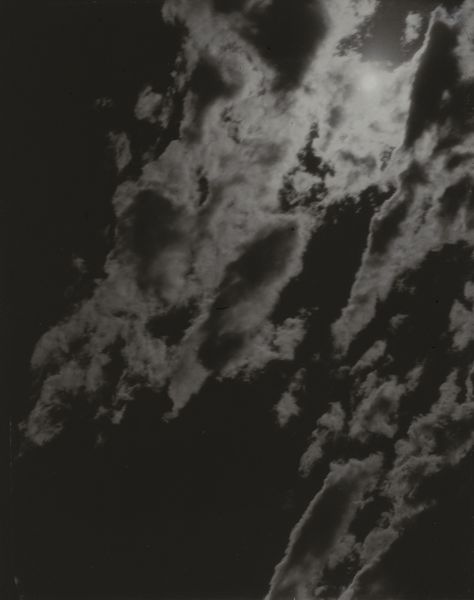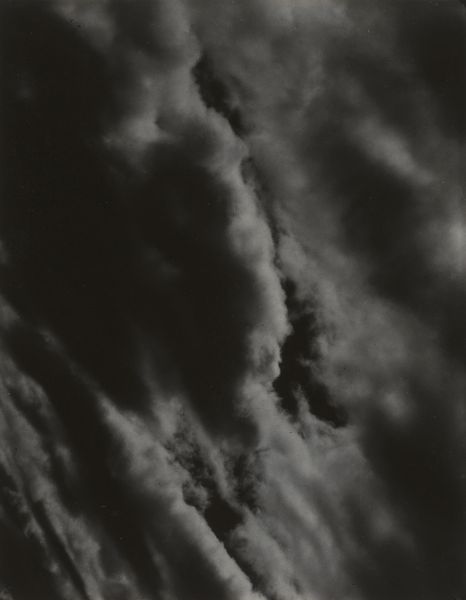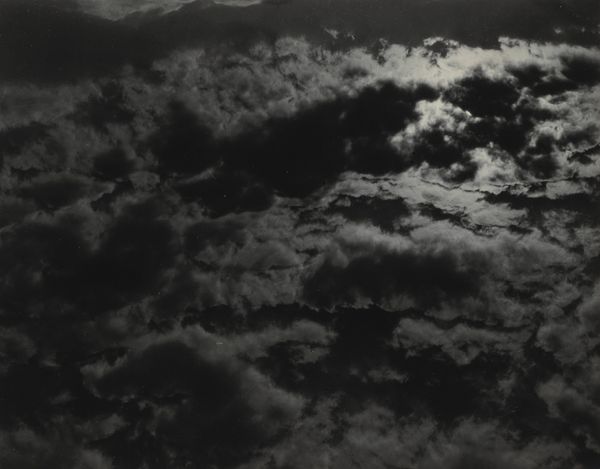
photography, gelatin-silver-print
#
pictorialism
#
landscape
#
photography
#
gelatin-silver-print
#
monochrome photography
#
abstraction
#
modernism
#
monochrome
Dimensions: sheet (trimmed to image): 9.2 x 11.8 cm (3 5/8 x 4 5/8 in.) mount: 34.1 x 27.2 cm (13 7/16 x 10 11/16 in.)
Copyright: National Gallery of Art: CC0 1.0
Editor: So here we have "Equivalents", a gelatin-silver print made in 1926 by Alfred Stieglitz. The tones are very striking; almost overwhelmingly dark in the center with the fluffy, bright clouds surrounding it. It gives me a strange sense of… being overwhelmed. What do you see in this piece? Curator: I see a powerful engagement with the industrialization of art, specifically the implications of mass photographic reproduction in the early 20th century. Stieglitz, known for his role in elevating photography to fine art, ironically employs a distinctly *mechanical* process to create deeply expressive work. Consider the labor involved: the darkroom work, the selection of the precise photographic paper, the act of "making" the print itself. This isn't just about capturing a scene, but crafting a tangible object. Editor: That’s interesting! So, the materials themselves, and the act of creation, are what hold the value, despite photography being so easily reproduced? Curator: Precisely! It’s a commentary on how even mass-producible forms of art like photography can embody unique labor and intention. The choice of gelatin silver – a standardized material – speaks to the growing industrialization, while the cloudscape subject pushes against the limitations of the medium, transforming the ordinary into something transcendent. Editor: So it's a physical, almost industrial *object*, imbued with artistic intentionality. He used the existing "factory standard" photographic process of the time, and used it in such a way that a powerful form of abstraction arises. This challenges the idea that art can't be born from a production line. Curator: Exactly. What seems initially like a straightforward landscape actually probes profound questions about labor, material culture, and artistic agency. We’ve been discussing Stieglitz the *producer* and his manipulation of the existing cultural landscape, and can even contrast his work with other mass-produced works of the time. This contextual consideration gives additional insight into why “Equivalents” remains captivating. Editor: I never thought about photography like that before! Seeing it as part of the broader manufacturing boom helps put its artistic intention into perspective. Thanks for the insightful lesson!
Comments
No comments
Be the first to comment and join the conversation on the ultimate creative platform.
